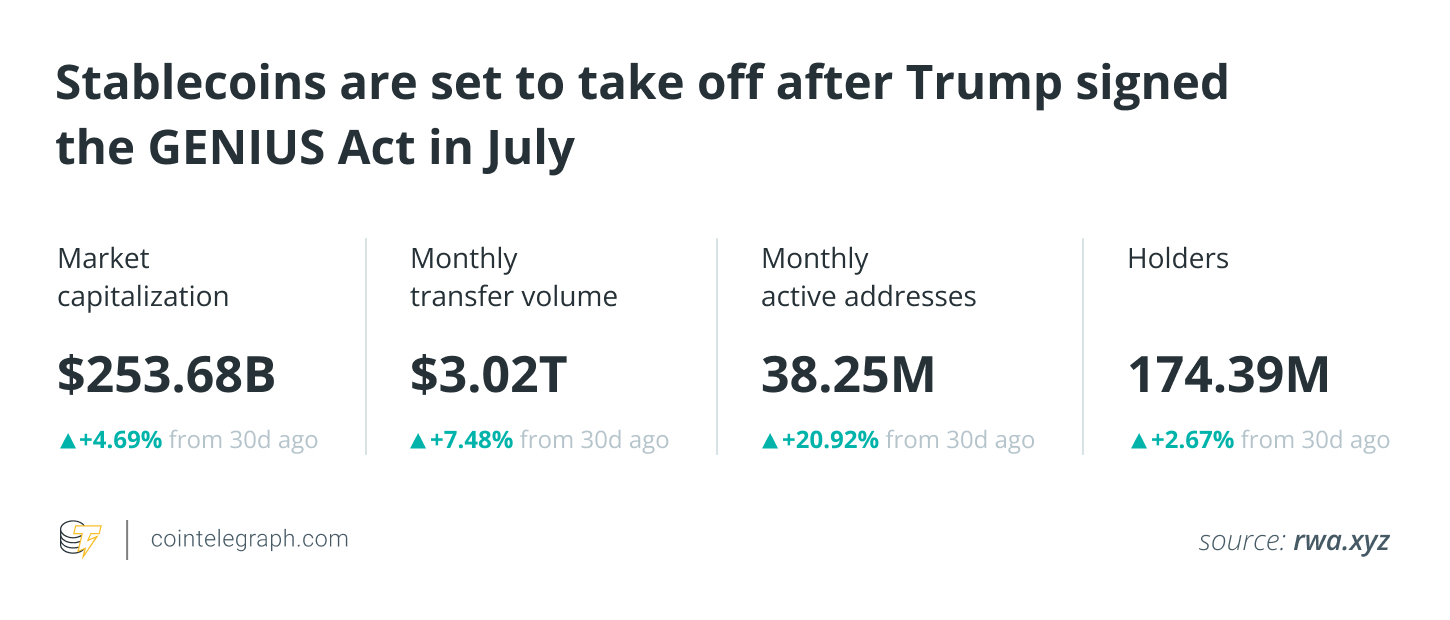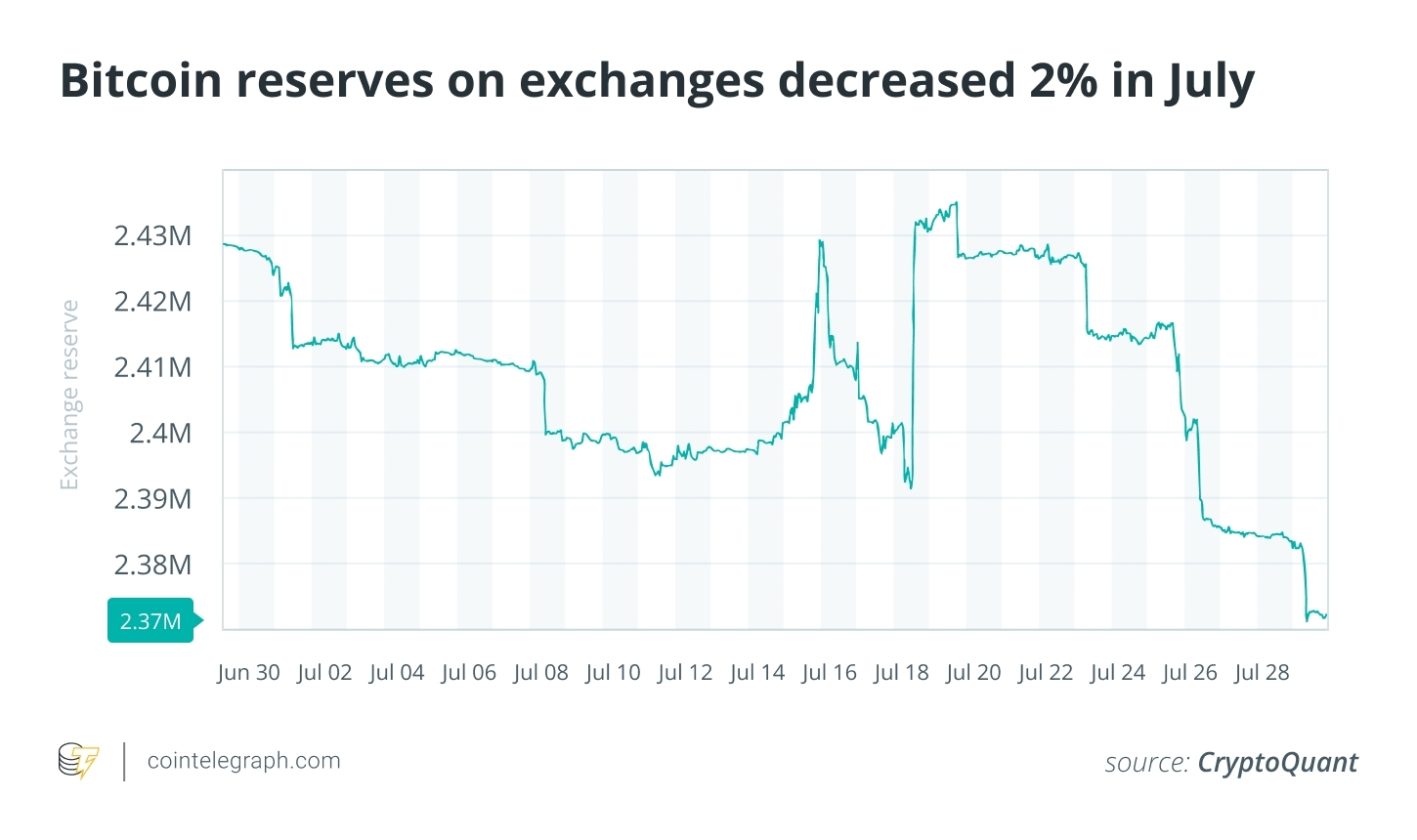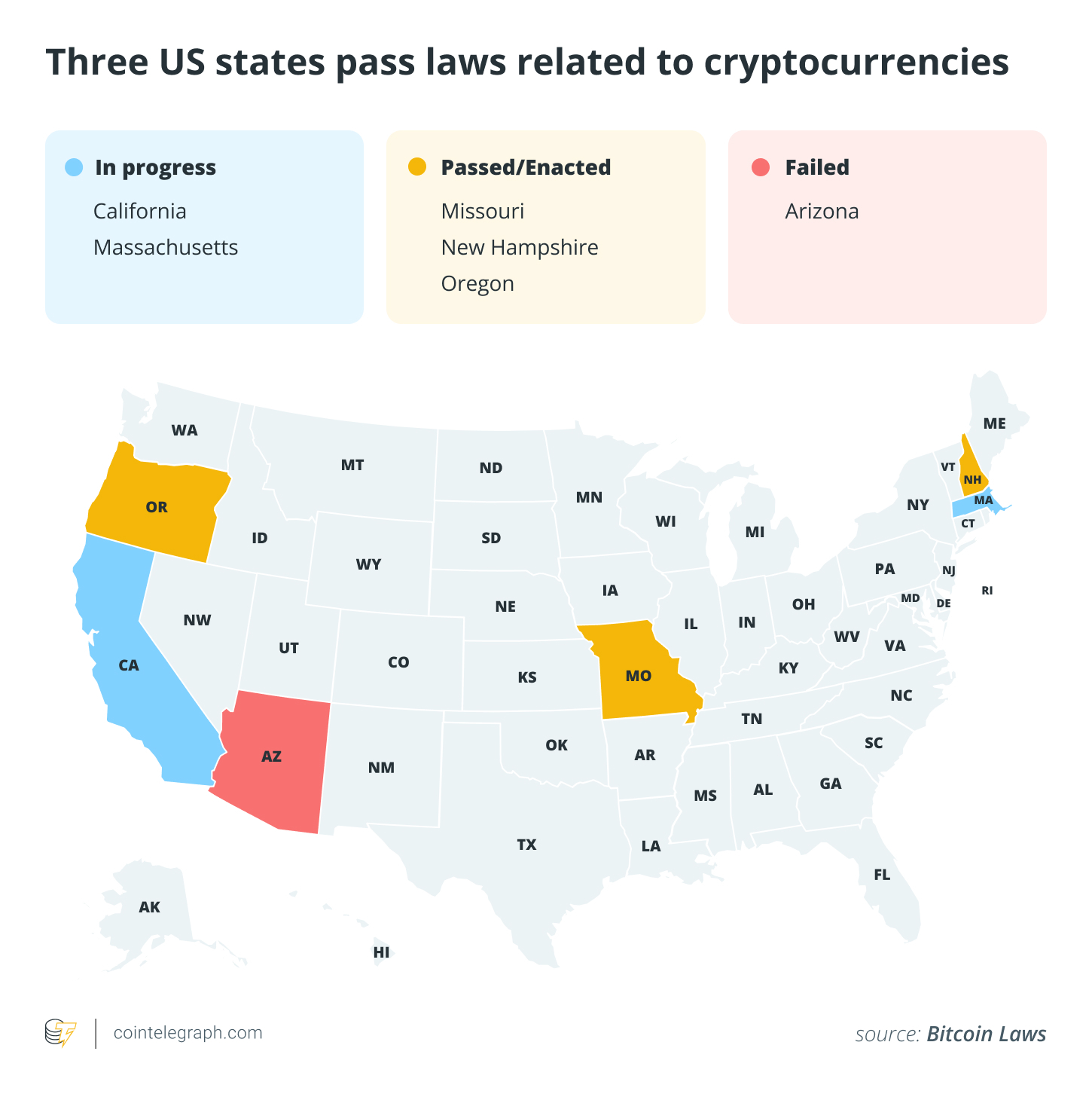Bitcoin exchange reserves dropped 2% in July as investors move BTC off exchanges, signaling bullish sentiment. Meanwhile, stablecoins surged $4 billion in market cap following the GENIUS Act’s passage, boosting crypto market confidence.
-
Bitcoin reserves on exchanges fell 14% since January, indicating increased long-term holding.
-
Stablecoin monthly active addresses rose over 20% in July, reflecting growing adoption.
-
Tokenized real-world assets (RWAs) exceeded $25 billion, growing 2.6% in July amid clearer regulations.
Bitcoin exchange reserves decline 2% as stablecoins gain $4B post-GENIUS Act. Explore key crypto market shifts and regulatory updates at COINOTAG.
How Did the GENIUS Act Impact the Stablecoin Market in July?
On July 18, the GENIUS Act became law, establishing a regulatory framework for stablecoins in the US. This legislation did not mandate interest offerings by stablecoin issuers, a point debated by industry leaders, yet it was widely recognized as a significant advancement for crypto regulation. Following the Act, the stablecoin market cap increased by nearly $4 billion, surpassing $250 billion. Additionally, monthly active stablecoin addresses grew by over 20%, reaching 38 million, signaling robust user engagement and adoption.
What Are the Implications of the GENIUS Act for Crypto Innovation?
Fabian Dori, Chief Investment Officer at Sygnum, highlighted that the GENIUS Act “gives confidence to organizations and issuers to develop original, innovative ‘killer apps’ that don’t just serve their customers’ current needs but create demand for entirely new services, including payments.” This regulatory clarity is expected to foster innovation and expand stablecoin utility across financial services.

Why Are Bitcoin Exchange Reserves Declining and What Does It Mean?
Bitcoin exchange reserves have decreased by 2% in July and 14% since January 2025, reflecting a trend of investors withdrawing BTC from exchanges to hold long-term. This reduction in available supply on exchanges is considered bullish, as it may lead to a supply shock if demand rises. July marked the first time since 2018 that less than 15% of total Bitcoin supply was held on exchanges and OTC desks, intensifying speculation about future price rallies.
What Do Experts Say About Bitcoin’s Supply and Price Dynamics?
Crypto Chief, a Bitcoin analysis account, noted a historic divergence between Bitcoin’s price reaching all-time highs and the plummeting BTC balance on OTC desks: “The Bitcoin balance available OTC is in freefall. We have never seen such a divergence between balance and price! You are witnessing a supply problem play out.” Ben Zhou, CEO of Bybit, added that declining exchange reserves suggest reduced trading activity and uncertainty about price stability, indicating cautious investor sentiment.

What Is the Current Status of Tokenized Real-World Assets (RWAs)?
The tokenized RWA market surpassed $25 billion in July, growing 2.6% amid increasing institutional interest and clearer regulatory frameworks. Tokenized private credit and US Treasury debt have driven a 260% market growth this year. Tokenized stocks also saw a 15% increase in value to over $400 million, with trading addresses rising nearly 700% in July, partly due to new offerings from trading platforms like Robinhood.
Are There Legal Challenges Surrounding Tokenized Stocks?
Despite growth, legal uncertainties remain, especially regarding investor protections for token holders of private firms’ equity-like tokens. Regulators have expressed concerns about the lack of ownership rights and potential risks, highlighting the need for clearer legal frameworks to support sustainable adoption.

Which US States Passed Crypto Laws in 2025 and What Are Their Effects?
In addition to federal legislation, Missouri, New Hampshire, and Oregon enacted crypto-related laws in July. Missouri regulated crypto ATMs and recognized metals-backed electronic currencies as legal tender. New Hampshire formed a committee to explore regulatory frameworks for stable tokens and RWAs, with findings due by November. Oregon updated abandoned property laws to include crypto assets, requiring holders to remit or liquidate after three years.
Why Did Arizona Veto Its Crypto Reserve Bill?
Arizona Governor Katie Hobbs vetoed House Bill 2324, which aimed to create a state stockpile from seized crypto assets. The veto was due to concerns that the bill would discourage local law enforcement cooperation by removing seized assets from local jurisdictions, potentially weakening enforcement efforts.

How Are Global Regulatory Approvals Shaping Crypto Firms’ Operations?
July saw seven countries establish licensing frameworks or issue licenses to crypto firms, enhancing regulatory clarity worldwide. The Hong Kong Monetary Authority finalized stablecoin rules and launched a public registry for issuers. European firms Bybit, OKX, and CoinShares secured licenses under the MiCA framework, expanding operations in Austria and France. Ripple pursues MiCA licensing for European expansion, while AllUnity received approval to issue euro-denominated stablecoins in Germany. Bitstamp gained approval to serve Singapore customers.
What Is the Status of Banking Licenses for US Crypto Firms?
In the US, Ripple and Circle are actively seeking national banking licenses from the Office of the Comptroller of the Currency. These licenses would allow them to offer custodial services under federal oversight, streamlining operations compared to state-by-state licensing.

Conclusion
The crypto market in July 2025 demonstrated significant shifts with Bitcoin reserves declining as investors opt for long-term holding, while stablecoins surged following the GENIUS Act’s regulatory clarity. Tokenized RWAs continue to expand despite legal challenges, and global regulatory developments are paving the way for broader adoption. These trends suggest a maturing market poised for innovation and growth under evolving frameworks.
Frequently Asked Questions
Why are Bitcoin exchange reserves decreasing despite price increases?
Bitcoin reserves on exchanges are decreasing as investors withdraw BTC to hold long-term, reducing available supply. This trend often precedes price rallies due to supply-demand imbalances.
What impact does the GENIUS Act have on stablecoin innovation?
The GENIUS Act provides regulatory clarity, encouraging issuers to develop innovative stablecoin applications that expand beyond current payment solutions.
Key Takeaways
- Bitcoin reserves on exchanges dropped 14% since January: Indicating increased long-term holding and potential supply constraints.
- Stablecoins market cap grew by $4 billion in July: Driven by regulatory clarity from the GENIUS Act and rising user adoption.
- Tokenized RWAs surpassed $25 billion: Growth fueled by private credit and US Treasury debt tokenization amid evolving regulations.
